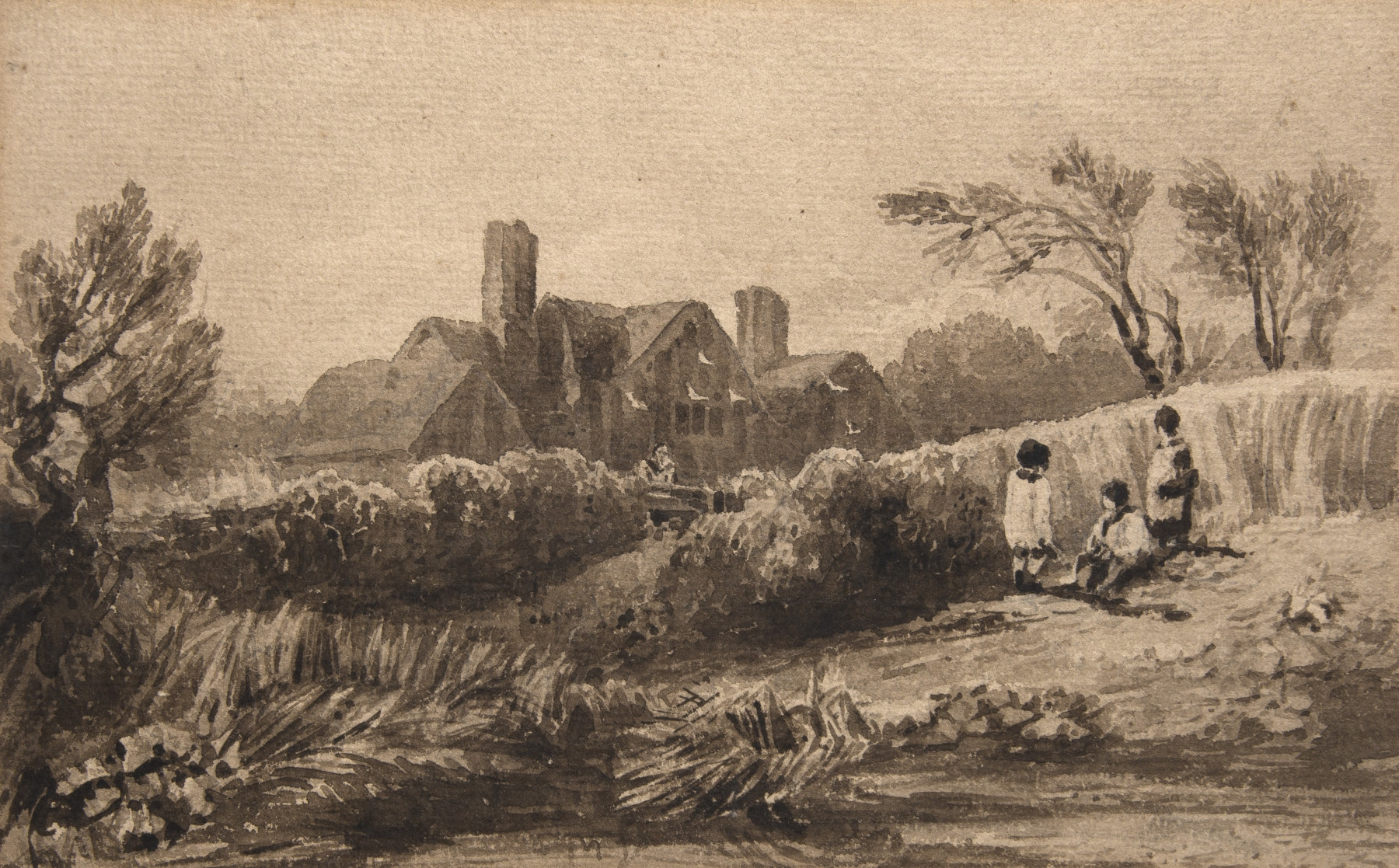
(click image to enlarge)
While the association between David Cox and Haddon Hall, in Derbyshire, has been explored with some thoroughness, his connection to the humbler dwelling of Selly Hill Farm (now known as Selly Manor) is less well known.
One of Birmingham’s oldest buildings, Selly Hill Farm originally stood on a hill in the manor of Selly, to the south of the present city centre. First recorded in the late fifteenth century as a farm known as Smythes tenement, it was leased in 1561 by the landowner, William Gower, to his bailiff, John Setterford, who then made extensive renovations to the house. Following the death of John’s widow, Phylis, in 1608, the house went to her grandson, John Pritchett, and the Pritchetts, who were yeomen farmers, continued to own and live in it throughout the remainder of the seventeenth century. During the eighteenth century, the house became more of an investment, and had a number of short-term owners and tenants. By 1775, when it was put up for sale, it had gained the name Selly Hill Farm. Following a further sale, 20 years later, the house lost its status, as the 65 acres on which it had stood were broken in two.
Early in the nineteenth century, the house was divided into two cottages, and fell increasingly into disrepair. To such artists as David Cox, however, this gave it an attractively picturesque quality. He produced the earliest known drawing of the building before 1840, at a time when the two cottages were occupied by the agricultural labourers, Charles Holyoake and Charles Stuckley, and their families. As the Holyoakes were just a couple, while the Stuckleys comprised a household of seven, the three children in the present watercolour may have belonged to the latter.
Around the time of Cox’s death in 1859, the building was reapportioned as three cottages and became known as the Rookery, a term suggestive of its increasingly overcrowded and dilapidated state. In 1895, it was bought, along with several other nearby plots of the divided Selly Grove estate, by Edward Oliveri, an Italian-born wine merchant and local councillor. However, it was only after his premature death in 1907 that action was taken to preserve and repair it. It was then bought by George Cadbury, the creator of the famous chocolate company and founder of Bournville, the model village that lies just south of Selly. Under the direction of the architect, William Alexander Harvey, it was removed and rebuilt in Bournville, a painstaking process that took seven years between 1909 and 1916. It then opened as a museum, with the new name of Selly Manor, displaying sixteenth and seventeenth-century furniture and domestic objects that had been collected by George Cadbury’s son, Laurence.